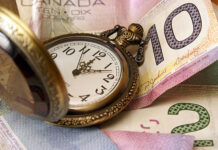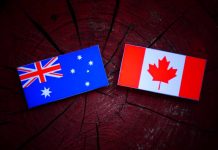Markets
Trading dynamics were muted today until US eco data surprised friend and foe. January headline retail sales rose by 5.3% m/m (vs 1.1% expected). The first increase since September showed broad-based advances. Details showed strong contributions from non-store retailers (11%) and from food services and drinking places (+6.9%). Flattening US Covid-curves triggered an easing of restrictions at the start of the year. In general, the impact of the latest round of $600 stimulus payments is visible as well. Today’s retail sales are probably just the tip of the iceberg of the effect that the Democratic $1900bn stimulus proposal can have. The retail sales control group, which excludes food services, car dealers, building-materials stores and gasoline stations and serves as a proxy for consumption in US GDP, increased by 6% m/m, the strongest since June. Apart from retail sales, US January producer prices beat consensus as well. The headline figure rose by 1.3% m/m to be up 1.7% y/y. Core PPI even moved to 2% y/y. For sake of completeness, we mention the stronger than forecast rebound in industrial production (0.9% m/m vs 0.4% m/m).
Strong consumption and higher inflation: a double check for the reflation trade. US Treasuries spiked lower with a test of overnight sell-off lows. Failure to copy the dash of the past sessions triggered rebound action higher. If confirmed during the remainder of today’s US dealings, it suggests that the downside might become better protected, at least in the short run. It would enable the US Note future (but also the German Bund) to shrug off technical oversold conditions. The US yield curve bull flattens with yields shedding 0.9 bps (2-yr) to 5.7 bps (30-yr). The German yield curve moves in parallel fashion with yields 0.5 bps (2-yr) to 2.5 bps (30-yr) lower. The technical picture shows a failed test of -0.34% resistance (62% retracement of March/November decline) for the German 10y yield. 10-yr yield spread changes vs Germany widen by 2 bps with Greece (+6 bps) underperforming. The dollar spiked higher on the US eco data and keeps those gains for now. EUR/USD drops from 1.21 at the start to below 1.2050. The trade-weighted greenback approached the 91 big figure. USD/JPY is the exception to the rule, with the pair running into yesterday’s high. Up until now, JPY has been the weakest link amongst FX majors this year. EUR/GBP joins the move south in EUR/USD with the pair sub 0.87 and readying a test of key support at 0.8671.
News Headlines
Canadian headline inflation accelerated from -0.2% m/m to 0.6% in January, pushing up the yearly figure to 1%. The price rise came as gasoline prices but also prices for durable goods jumped. That compares to 0.5% m/m and 0.9% y/y expected. An average of core inflation gauges more or less stabilized vs. December even as services inflation accelerated from 0% m/m to (a still low) 0.3%. The Canadian dollar trades slightly lower vs. a generally stronger greenback north of 1.27.
Former ECB chief Draghi in his maiden speech before parliament called on Italians to pull together to help rebuild the country in the wake of the pandemic. He promised sweeping reforms (in a.o. public administration and the justice system) to jumpstart the long-troubled economy and will re-write plans for how to spend the more than 200bn euros of EU funds. His comments come before a confidence vote he is expected to win with record margins in the Senate later today and in the lower house tomorrow.
In light of the recent increase in oil prices, advisors to Saudi Arabia said the kingdom plans to reverse a recent unilateral production cut of 1 million barrels a day when OPEC meets next month. The move, if decided, would come into force in April and highlights growing confidence over an oil-price recovery. OPEC expects world oil consumption to rise by about 4.7m bpd in the last quarter of this year. Brent crude drops $1/b to $63.5/b.













